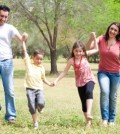Marriage, Family, and Kinship Organization Notes

Family as a Social Institution
Organized
Essential tasks
Institution: system of norms, values, statuses, and roles
Perform certain functions
Marriage, business, the media, medicine, law, science, and recreation are also institutions
Activity becomes institutionalized when accepted by society as necessary, proper, and predictable
Family – solution to problems and cause of problems
Are children better off with traditional family patterns?
Sweden – highest family decline not high negative outcomes
(Image courtesy of stockimages/FreeDigitalPhotos.net)
FAMILIES AS GROUPS AND SYSTEMS
Interrelated statuses (positions) and the expectations (roles)
Norms
Primary Group
1) basic socializing agent
2) personal satisfaction (well-being, companionship, ego worth, security, and affection)
3) social control
Secondary group: goal oriented rather than person oriented
Absence or loss of primary source of social support negative outcomes: school truancy, accidents, suicides, commitment to mental hospitals, pregnancy disorders, coronary disease, and lack of recovery from illness
CHARACTERISTICS OF MARRIAGE, FAMILY, AND KINSHIP GROUPS
Boundaries of Marriage
Marriage is (W. Stephens) 1) a socially legitimate sexual union, 2) a public announcement, 3) idea of performance, and 4) marriage contract (reciprocal obligations)
Definition of marriage excludes persons in same-sex relationships
Marriage and Number of Spouses
Singlehood
White males and white females were less likely to be single than other racial groups (2000)
By age 55 only 5.5% of men and 4.9% of women had never been married
Since 1970 those who have never been married has risen sharply
New style of singlehood: happiness, career, and social mobility; higher levels of personal happiness
Japan: morality higher for single than married individuals
Married men and women live longer, greater well-being, and better health than never-married
Improves financial situation, increase social networks and access to medical information and services, constrain risk-taking behavior, and a buffer to stressful situations
Monogamy
Traditional, proper, and universally recognized
Small percentage of societies are strictly monogamous
Sequential or serial monogamy
Polygamy
Polygyny: several or many wives
Polyandry: many husbands
Group marriage
Unbalanced sex ratio – functional
Fraternal polyandry: husbands are brothers
Sororal polygyny: wives are sisters
Levirate: wife marries brother of deceased husband
Sororate: sister of his deceased wife
Polygyny: marriage of one man to more than one woman at the same time
Most two wives rather than more
Nigeria: stability of marriage
Privilege of the wealthy
Prestige and high status – chiefs
Procreation: lower rate of pregnancy per wife
Mormon fundamentalists
Polyandry
Group marriage goes together with polyandry
Co-husbanding is fraternal
Economic inducement – man recruits co-husbands so they will work for him
Frequently female infanticide
Group Marriage
Rare
Time span is limited
EX: Group Marriage in the Oneida Community
BOUNDARIES OF THE FAMILY
Nuclear and Conjugal Families
Husband, wife, and their immediate children
Conjugal: husband and wife
Nuclear: any two or more persons related to one another by birth (blood), marriage, or adoption
Family of orientation
Family of procreation
EX: Nuclear Families in Sweden
Modified-Nuclear and Modified-Extended Families
Nuclear family retains considerable autonomy
Maintains a coalition with other nuclear families
Exchange contacts, goods, and services
Immigrants 0 send labor migrants
Extended Families
Family structures that extend beyond the nuclear family
Consanguine families: family is a on blood ties rather than marital ties
Joint families: large families in India; common treasury, common kitchen and dinning room, and common deities; patrilineal and patrilocal
Stem families: two families in adjacent generations, joined by economic and blood ties
Japan: live with one spouse’s parents
Most common if the marriage was arranged, husband was the oldest son, and/or the wife was the oldest daughter and had no brothers
EX: Extended Families in China
BOUNDARIES OF KINSHIP
Regulated social norms
Taboo on incest: all societies forbid sexual relations between persons in certain kinship positions, particularly those within and closest to the nuclear family father-daughter, mother-son, brother-sister, stepfather-stepdaughter,…
Confusion of statuses and role expectations
Sexual incest (most likely to occur between daughter-biological father then stepfather)
All societies forbid intermarriage between certain kinship group members
Functions of Kinship Systems
1) property holding and inheritance
unilineal – one bloodline
patrilineal – father and his bloodline
matrilineal – female line
United States – bilateral system
Significance – perpetuate power and wealth through successive generations
2) housing and residential proximity
patrilocal – bride changes residence and lives with the parents of the groom
matrilocal
bilocal – couple lives near the parents of either spouse
neolocal – located apart form both sets
Local concentration is the pattern
3) keeping in touch and giftgiving
expected that kin communicate or keep in touch
“kinkeeper” is usually female
Material or nonmaterial
4) affection, emotional ties, and primary relationships
emotionally close to kin
women express more affection
BOUNDARY AMBIGUITY
Knowing who is in and out of the family system
New and old spouses, stepparents and stepchildren
Growing complexity of families
Co-parent conflict
Level of stress
About admin
Teaching Sociology is very enjoyable for me. Sociology is like a gateway to a plethora of knowledge and understanding. The subject material is directly applicable to real-world events and situations found in everyday life. The methods and concepts of sociology yield powerful insights into the social processes shaping the contemporary world. The ability to identify and understand these processes is valuable preparation for professional participation in an ever changing and complex society.Related Posts
Latest News
-
Sociology and the Pursuit of Social Justice: A Compelling Reason to Study It
Sociology is a fascinating field of study that delves into...
- Posted May 31, 2023
- 0
-
The Power of Sociology: Understanding the Importance of Social Structures
Sociology is the scientific study of society, social relationships, and...
- Posted May 31, 2023
- 0
-
FACT FINDING MISSIONS
Life is interleaved with contracts and agreements, the formal and...
- Posted August 10, 2018
- 0
-
The Many Churches of Enhancement
Throughout history religions formed around prophetic doctrines and absorbed people...
- Posted April 6, 2018
- 0
-
TAKE A SECOND TO CONSIDER THE SECOND
Remember that during the late 1700’s when the young US...
- Posted February 21, 2018
- 0
-
WHAT’S ON THE TABLE FOR IMMIGRATION
Deliberating in upcoming months will be a new proposal for...
- Posted February 12, 2018
- 0
-
Time-saving Tips from Your Instructor
Here are some helpful tips: Involve your family/friends. Let them...
- Posted October 19, 2016
- 0
-
Sociology and the Pursuit of Social Justice: A Compelling Reason to Study It
Sociology is a fascinating field of study that delves...
- May 31, 2023
- 0
-
The Power of Sociology: Understanding the Importance of Social Structures
Sociology is the scientific study of society, social relationships,...
- May 31, 2023
- 0
-
FACT FINDING MISSIONS
Life is interleaved with contracts and agreements, the formal...
- August 10, 2018
- 0
-
Successful Families
SUCCESSFUL FAMILIES Balancing Work and Family (dual-earner families) 1.Value...
- June 16, 2011
- 0
-
Sociology of Marriage
Types of “Good” Marriages: Romantic Marriage: passion and sex...
- June 16, 2011
- 0
Sociological Theory
-
Symbolic Interactionism
Symbolic interactionism focuses on how individuals communicate with one another, the basis...








